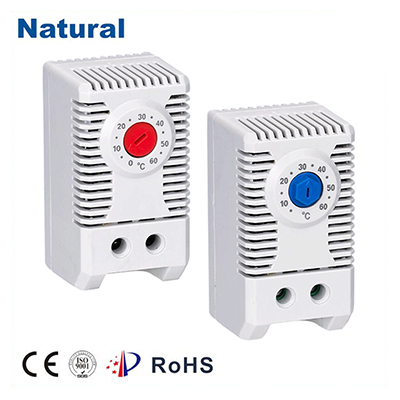Thermostat controllers have come a long way since their inception, revolutionizing the way we manage indoor climate control. These devices have evolved significantly over the years, becoming smarter, more intuitive, and energy-efficient. In this article, we will explore the journey of thermostat controllers, from their humble beginnings to their modern, technologically advanced forms.

The Early Days of Thermostat Controllers Thermostat controllers first emerged in the 19th century as simple mechanical devices. The most rudimentary ones consisted of bimetallic strips that would bend with temperature changes, triggering mechanical switches to turn heating or cooling systems on or off. These early thermostats allowed users to set a desired temperature and maintain a relatively constant indoor climate. The Digital Revolution The advent of digital technology in the mid-20th century marked a significant turning point for thermostat controllers. Digital thermostats replaced their mechanical predecessors, offering more precise temperature control and programmable schedules. Users could now set different temperature levels for various times of the day, optimizing comfort and energy efficiency. Smart Thermostats: A Game-Changer In recent years, smart thermostats have taken center stage in the world of climate control. These devices leverage advanced sensors, Wi-Fi connectivity, and artificial intelligence to provide homeowners with unprecedented control over their indoor environment. Key Features of Smart Thermostats Remote Accessibility: Smart thermostats can be controlled remotely using smartphones or computers. This feature enables users to adjust their home’s temperature even when they are not on the premises, enhancing convenience and energy savings. Learning Algorithms: Many smart thermostats are equipped with learning algorithms that adapt to users’ preferences and schedules. Over time, they can automatically optimize temperature settings to maximize comfort and reduce energy consumption. Integration with Smart Home Ecosystems: Smart thermostats seamlessly integrate with other smart home devices, such as voice-controlled assistants, lighting systems, and security cameras. This interconnectedness enhances overall home automation and control. Energy Efficiency: One of the most significant advantages of smart thermostats is their ability to save energy. They can analyze data from occupancy sensors and weather forecasts to make real-time adjustments, ensuring heating and cooling systems operate efficiently. Challenges and Considerations While smart thermostats offer numerous benefits, there are challenges to consider. They can be more expensive than traditional thermostats, and not all homes have the necessary infrastructure for Wi-Fi connectivity. Additionally, privacy concerns regarding data collection and sharing must be addressed. The Future of Thermostat Controllers The future of thermostat controllers promises even greater advancements. We can expect to see continued integration with renewable energy sources, enhanced data analytics, and improved energy efficiency algorithms. As the Internet of Things (IoT) expands, thermostat controllers will play a crucial role in creating smarter, more sustainable homes. Conclusion Thermostat controllers have evolved significantly, from basic mechanical devices to cutting-edge smart thermostats. These innovations have not only improved comfort and convenience but also contributed to energy conservation and sustainability. As technology continues to advance, we can anticipate even more exciting developments in the world of thermostat controllers, making our lives more comfortable and environmentally friendly than ever before.